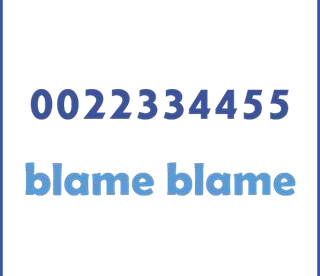The Weekender, May 24, 2019

1) “The Death Row Book Club” (Longreads, 14 minutes, March 2018). The subhead: “When Anthony Ray Hinton was sentenced to death for two murders he didn’t commit, he used his time to create a book club for death row inmates.” Thanks to reader Peter H. for the suggestion.
The books were a big deal. Nobody had books on death row. They had never been allowed, and it was like someone had brought in contraband. Only six guys were allowed to join me in book club, but every guy on the row was now allowed to have two books besides the Bible in his cell. Some didn’t care, but others made calls out to family and friends to let them know they could send in a book or two. It had to be a brand-new book and be sent directly from a bookstore to the prison. It was like a whole new world opened up, and guys started talking about what books they liked. Some guys didn’t know how to read, others were real slow, almost childlike, and had never been to school beyond a few grades. Those guys didn’t know why they were on death row, and I wondered about a world that would just as soon execute a guy as treat him in a hospital or admit he wasn’t mentally capable of knowing right from wrong.
The very first book club meeting consisted of Jesse Morrison, Victor Kennedy, Larry Heath, Brian Baldwin, Ed Horsley, Henry, and myself. We were allowed to meet in the law library, but we each had to sit at a different table. We couldn’t get up. In order to talk to everyone at once, you had to kind of swivel around in your seat so no one felt left out. If someone wanted to read something out of the book, we had to toss the book to each other and hope that the guy caught it or it landed in reach of someone because we weren’t allowed to lift our butts up off the seats. The guards seemed nervous when they walked us to the library. We weren’t planning a riot or an escape; we were five black guys and two white guys talking about a James Baldwin book. Perfectly normal. Nothing to see here.
2) “Impossible Foods’ rising empire of almost-meat” (Engadget, 26 minutes, May 2019). I’ve had an Impossible Burger twice — once at Bareburger, once at the U.S. (Tennis) Open. It’s not good. It’s not bad. It’s just basically what you’d expect from a decent but burger. Or as the article says, “This is what’s revolutionary about Impossible’s burger — not that it’s the best you’ve ever tasted but that finally there’s a viable, inoffensive alternative for meat that you can find at a drive-through for less than $6.”
WeekenderAdUnits
3) The Now I Know Week in Review:
Monday: How a Fashion Brand Addressed a Bad Situation — I concluded ths one by saying that the guy in question “can still wear whatever brand of underwear he likes.” That, it turns out, was wrong, at will be for the rest of the summer. As a few of you pointed out, he’s currently in prison (tax evasion) and, therefore, does not get to pick out his own underwear. (I cannot believe I had reason to write that sentence.)
Tuesday: The Bomb Detector That Was a Dud — Millions of dollars for magic, but magic isn’t real.
Wednesday: Why Babe Ruth Didn’t Like Baby Ruth — Related: I asked my Twitter followers which is better, Baby Ruth or Butterfinger. The results are unsurprising and probably correct.
Thursday: Pigcasso — Pig + Picasso. If that weren’t obvious.
4) Last week, I put a rebus in this space, and people seemed to like it. So here’s another! (A rebus, by the way, is “a puzzle in which words are represented by combinations of pictures and individual letters; for instance, apex might be represented by a picture of an ape followed by a letter X,” per Google.)
Can you figure out what it says? (Click here for the answer.)

5) “Is PTSD Contagious?” (Mother Jones, 39 minutes, January 2013). The subhead: “It’s rampant among returning vets—and now their spouses and kids are starting to show the same symptoms.”
Brannan Vines has never been to war. But she’s got a warrior’s skills: hyperawareness, hypervigilance, adrenaline-sharp quick-scanning for danger, for triggers. Super stimuli-sensitive. Skills on the battlefield, crazy-person behavior in a drug store, where she was recently standing behind a sweet old lady counting out change when she suddenly became so furious her ears literally started ringing. Being too cognizant of every sound—every coin dropping an echo—she explodes inwardly, fury flash-incinerating any normal tolerance for a fellow patron with a couple of dollars in quarters and dimes. Her nose starts running she’s so pissed, and there she is standing in a CVS, snotty and deaf with rage, like some kind of maniac, because a tiny elderly woman needs an extra minute to pay for her dish soap or whatever.
Brannan Vines has never been to war, but her husband, Caleb, was sent to Iraq twice, where he served in the infantry as a designated marksman. He’s one of 103,200, or 228,875, or 336,000 Americans who served in Iraq or Afghanistan and came back with PTSD, depending on whom you ask, and one of 115,000 to 456,000 with traumatic brain injury. It’s hard to say, with the lack of definitive tests for the former, undertesting for the latter, underreporting, under or over-misdiagnosing of both. And as slippery as all that is, even less understood is the collateral damage, to families, to schools, to society—emotional and fiscal costs borne long after the war is over.
Like Brannan’s symptoms. Hypervigilance sounds innocuous, but it is in fact exhaustingly distressing, a conditioned response to life-threatening situations. Imagine there’s a murderer in your house. And it is dark outside, and the electricity is out. Imagine your nervous system spiking, readying you as you feel your way along the walls, the sensitivity of your hearing, the tautness in your muscles, the alertness shooting around inside your skull. And then imagine feeling like that all the time.
6) “The Bob Emergency: a study of athletes named Bob, Part I” (SB Nation/YouTube, 42 minutes, April 2019). It’s not about sports, but it is. Its description doesn’t do this absolute masterpiece justice, but: “More than 10,000 people named Bob have entered the world of sports. Today, there are only nine. Bobs are special people, and in losing them to retirement, we stand to lose more than we might imagine.” If you like it and want to watch more (52 minutes more), here’s part two.
Have a great (long) weekend!
